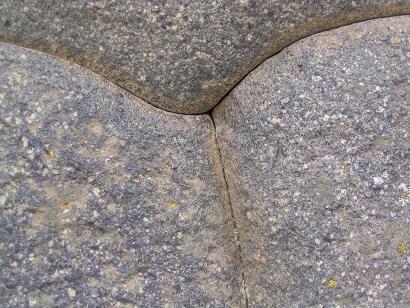

In December of 2003 my wife and I travelled to Peru to visit family. While there, we went on a trip to the Colca canyon which has wonderful scenery.


We also toured the sacred valley going down the Urabamba river from Cusco.
I was constantly impressed by the stonework.

Below is a view of Inca religious site "Saqsaywaman" with Cusco behind the hill. Refered to as a fortress in early works, the structure was used as such in a fight against the Spanish in 1536. In a significant battle, Juan Pizarro, brother of Francisco, lost his life after a wound to the head from a rock and an Incan warrior threw himself to his death rather than being captured alive by the Spaniards.
"The fortress, the walls, and the galleries were all built of stone, the blocks of which were not laid together in regular courses, but so disposed that the small ones might fill up the interstices of the great. They formed a sort of rustic work being rough-hewn except toward the edges, which were finely wrought; and though no cement was used, the several blocks were adjusted with so much exactness and united so closely that it was impossible to introduce even the blade of a knife between them. Many of these stones were of vast size, some of them being fully thirty-eight feet long, by eighteen broad, and six feet thick.
"We are filled with astonishment when we consider that these enormous masses were hewn from their native bed and fashioned into shape by a people ignorant of the use of iron; that they were brought from quarries, from four to fifteen leagues distant, without the aid of beasts of burden; were transported across rivers and ravines, raised to their elevated position on the sierra, and finally adjusted there with the nicest accuracy, without the knowledge of tools and machinery familiar to the European. Twenty thousand men are said to have been employed on this great structure, and fifty years consumed in the building. However this may be, we see in it the workings of a despotism which had the lives and fortunes of its vassals at its absolute disposal, and in which, however mild in its general character, esteemed these vassals, when employed in its service, as lightly as the brute animals for which they served as a substitute." - William H. Prescott - The Conquest of Peru